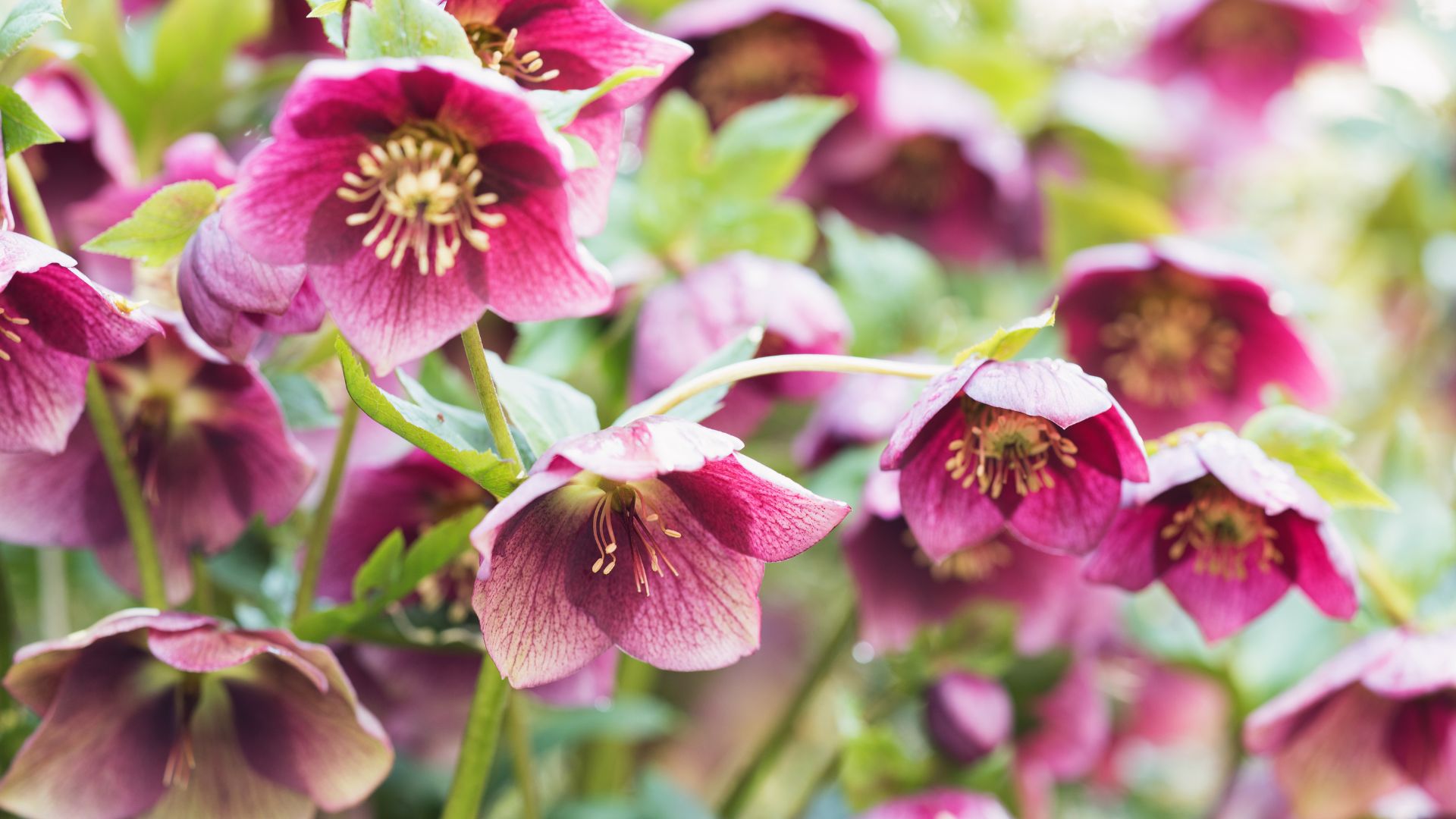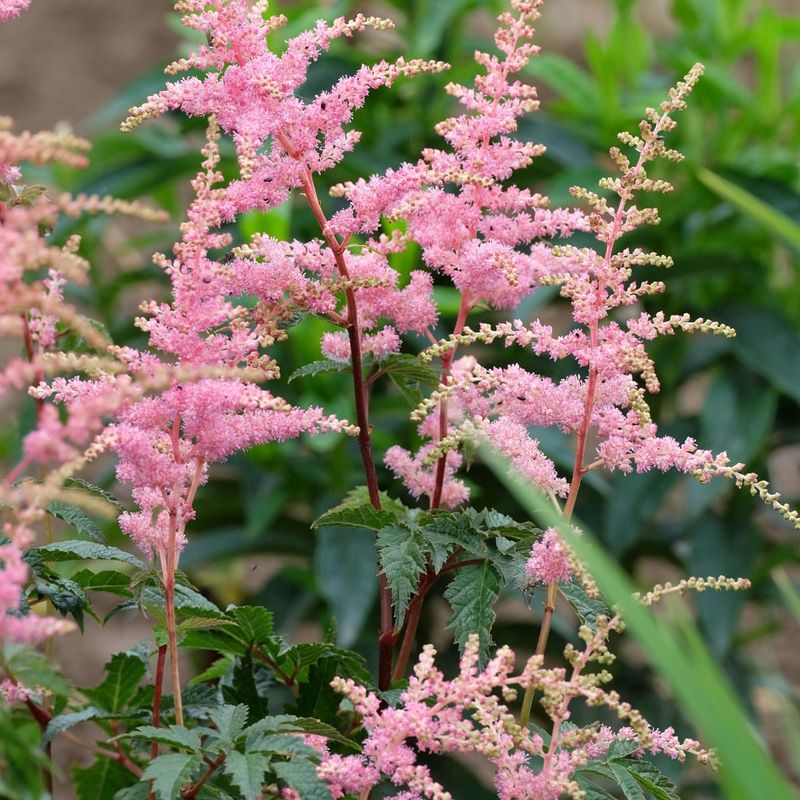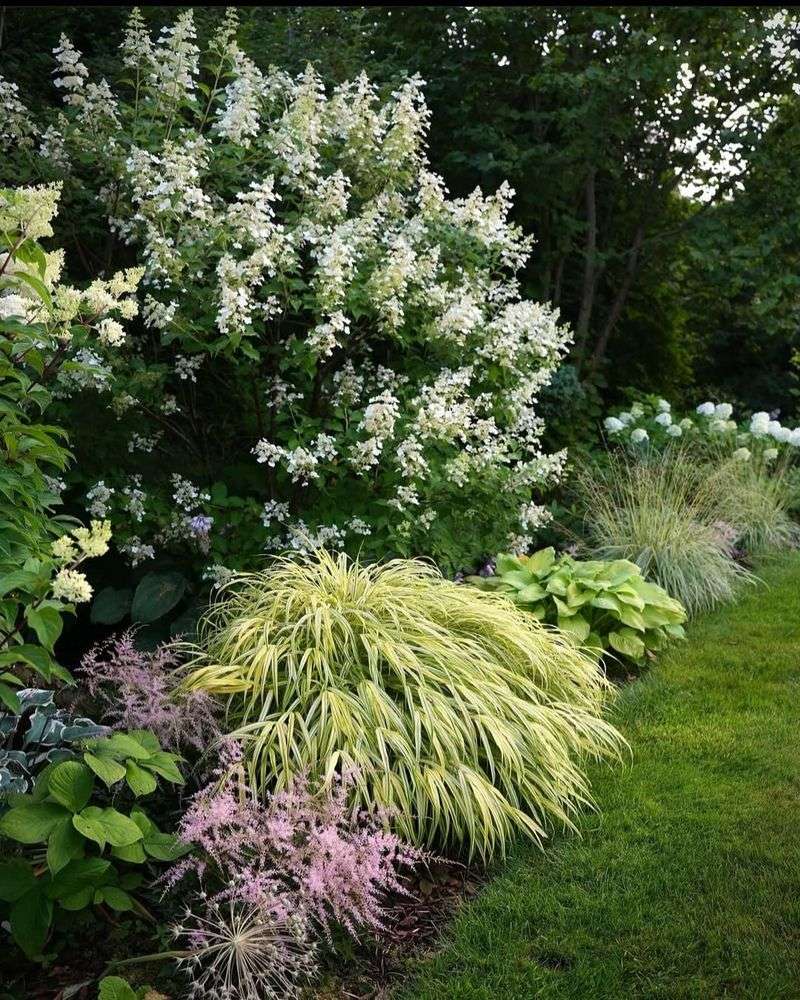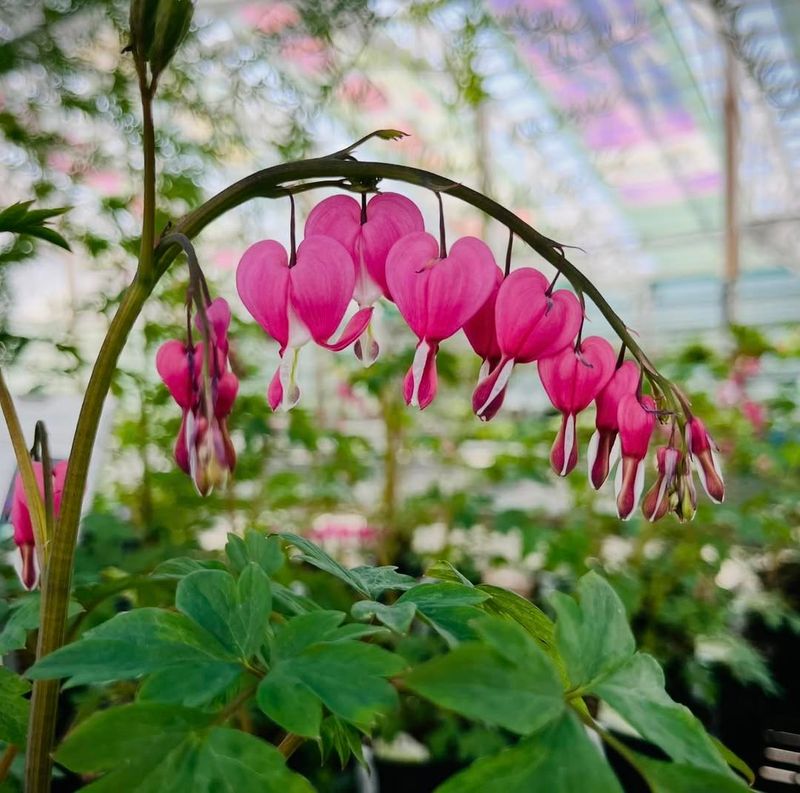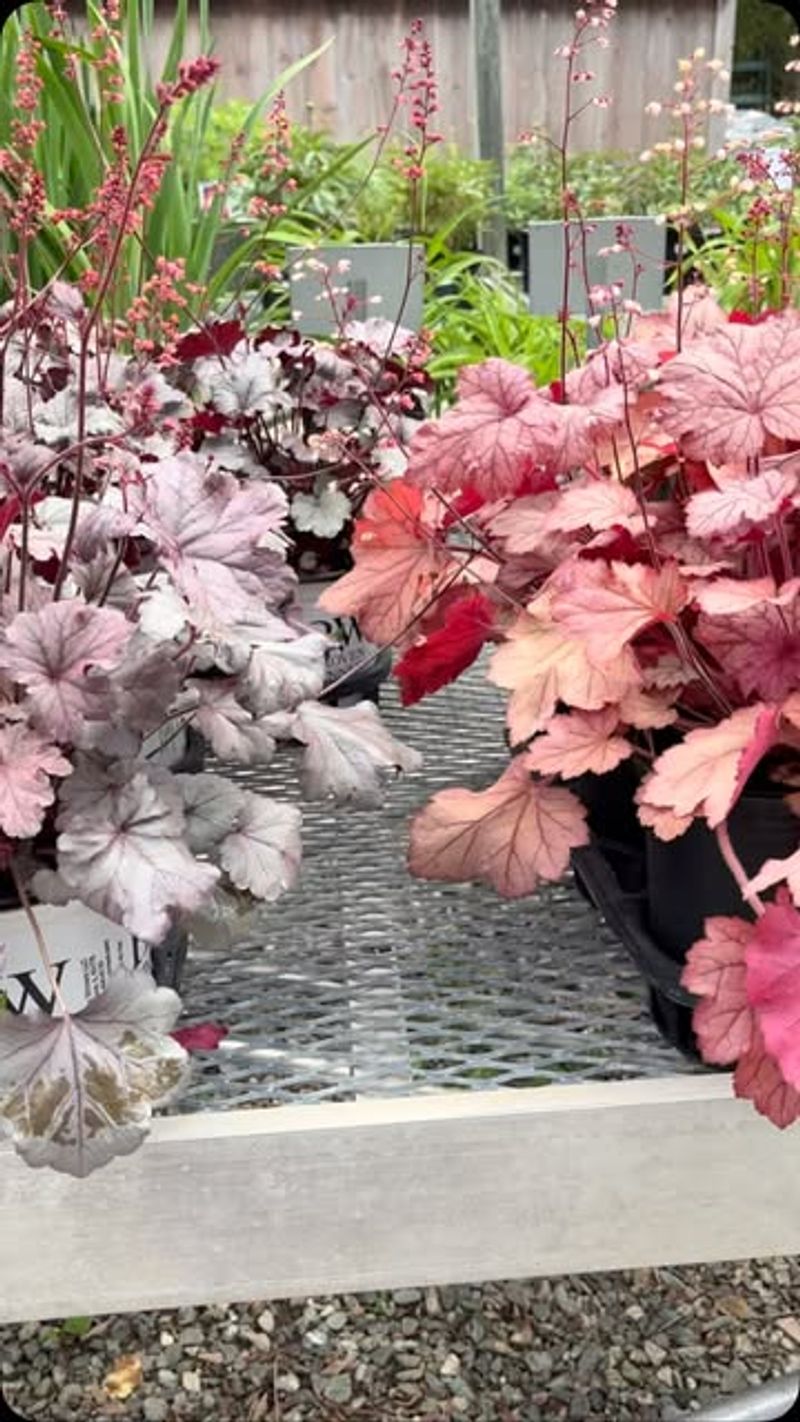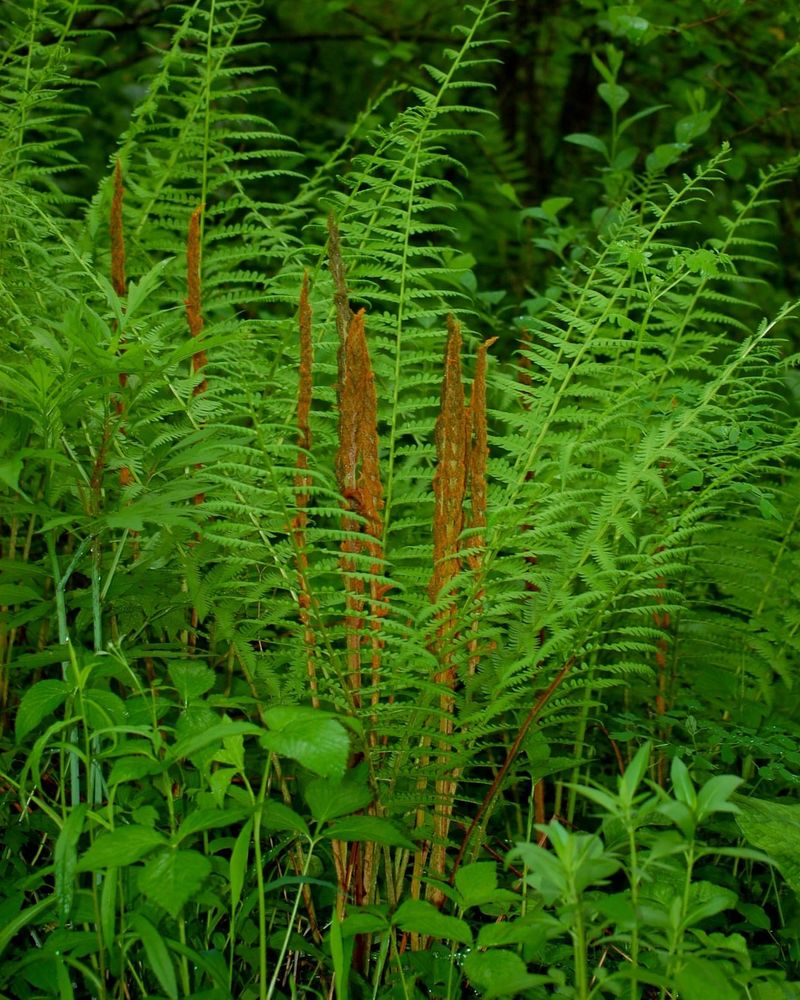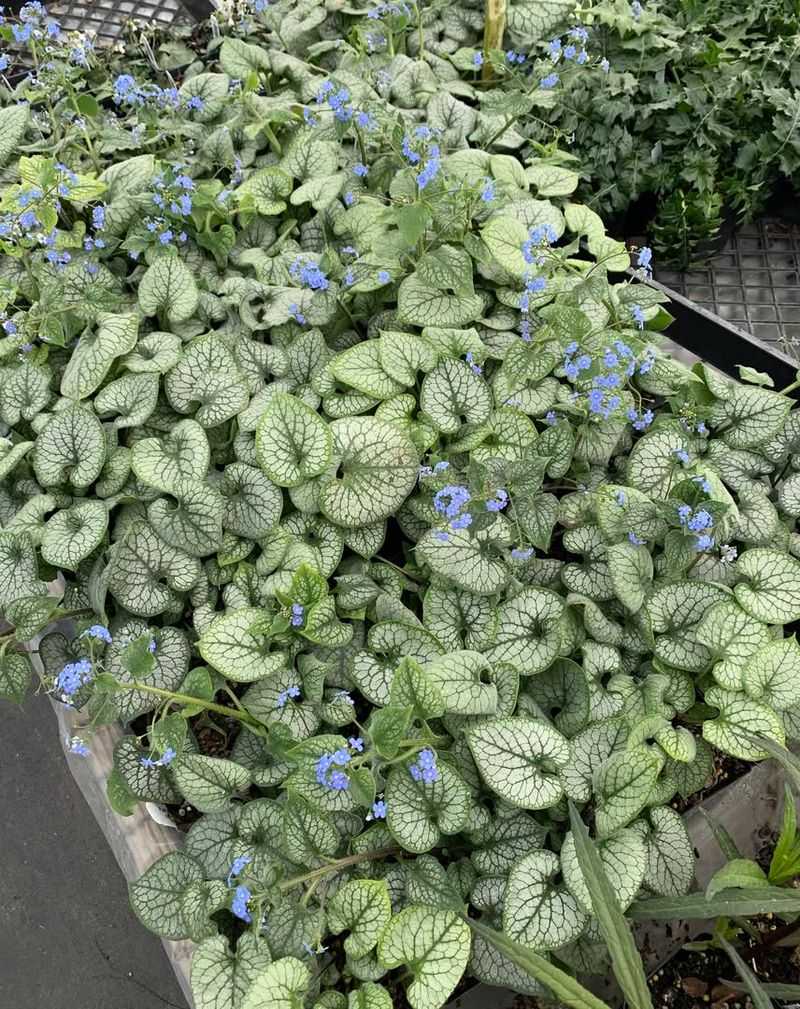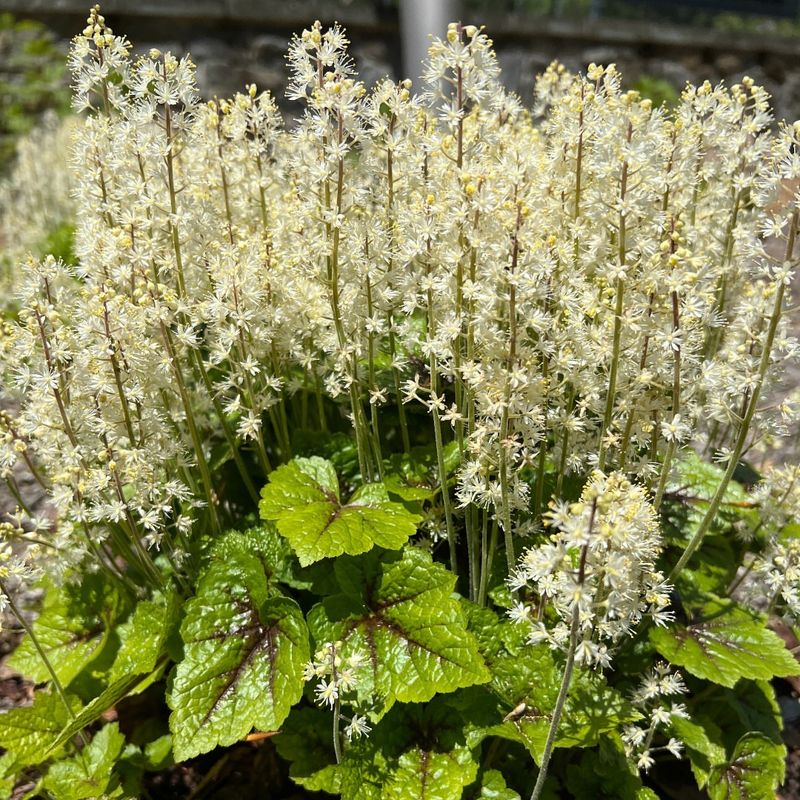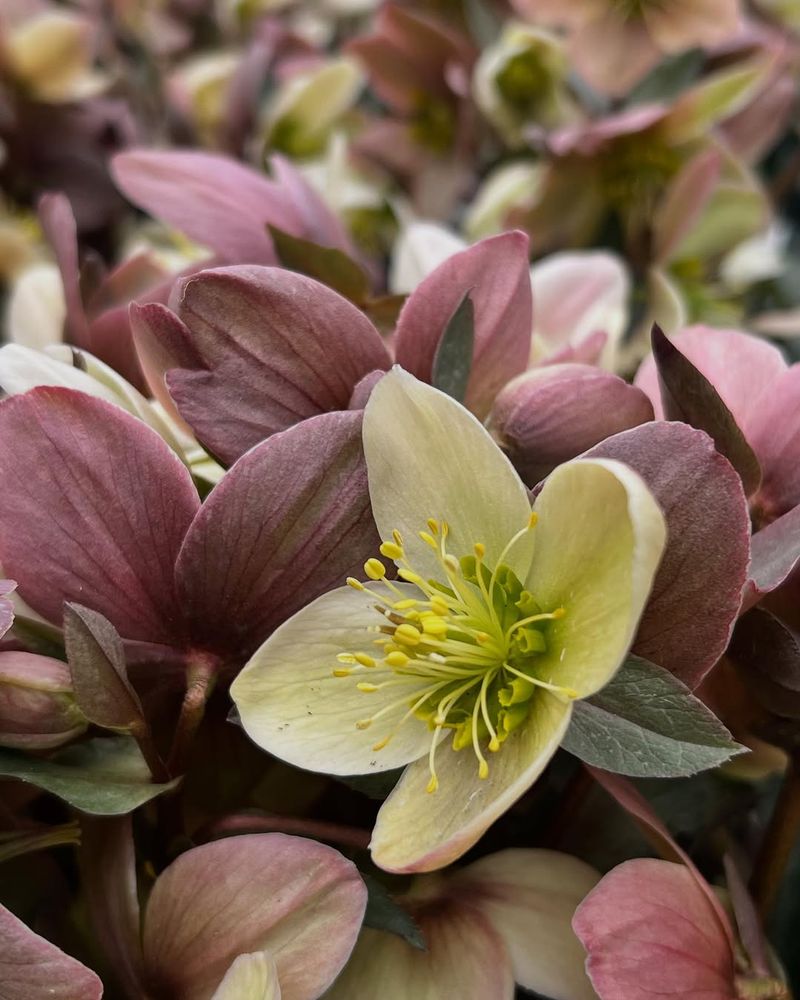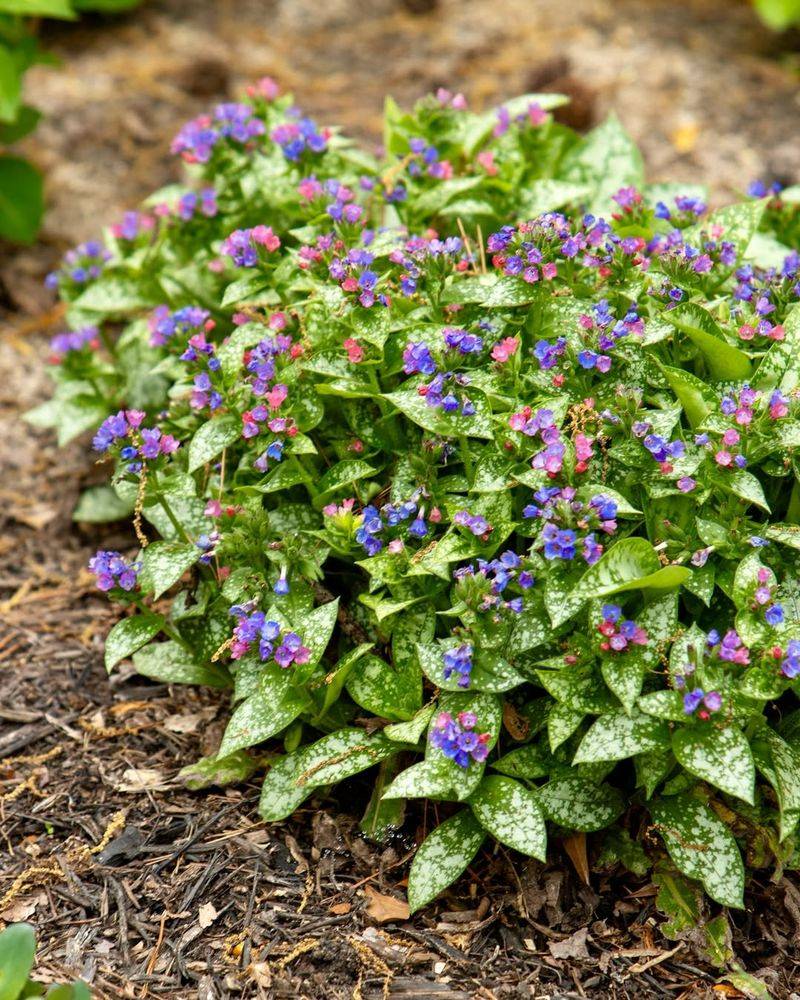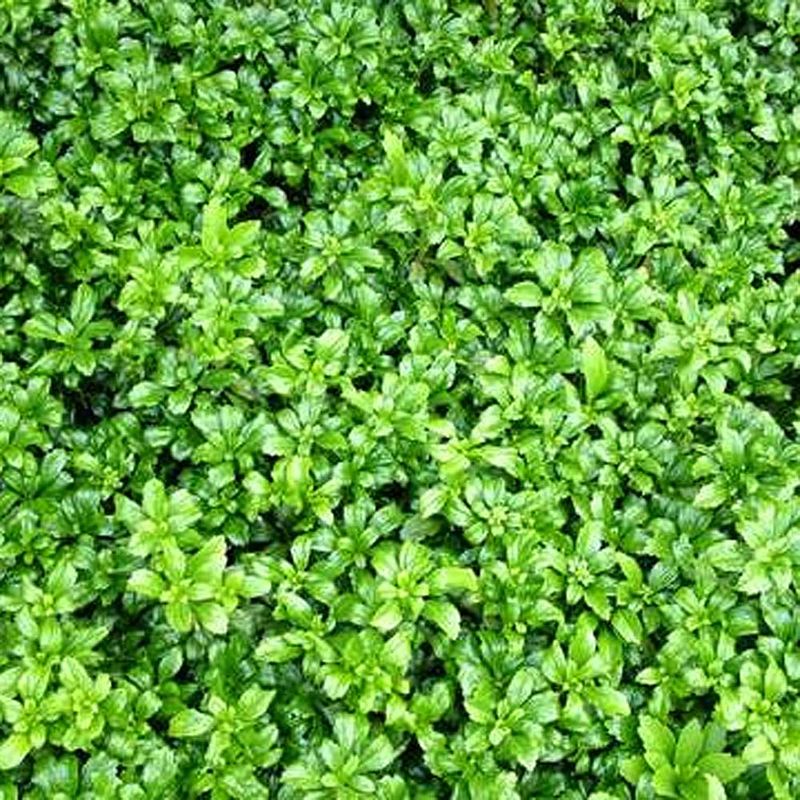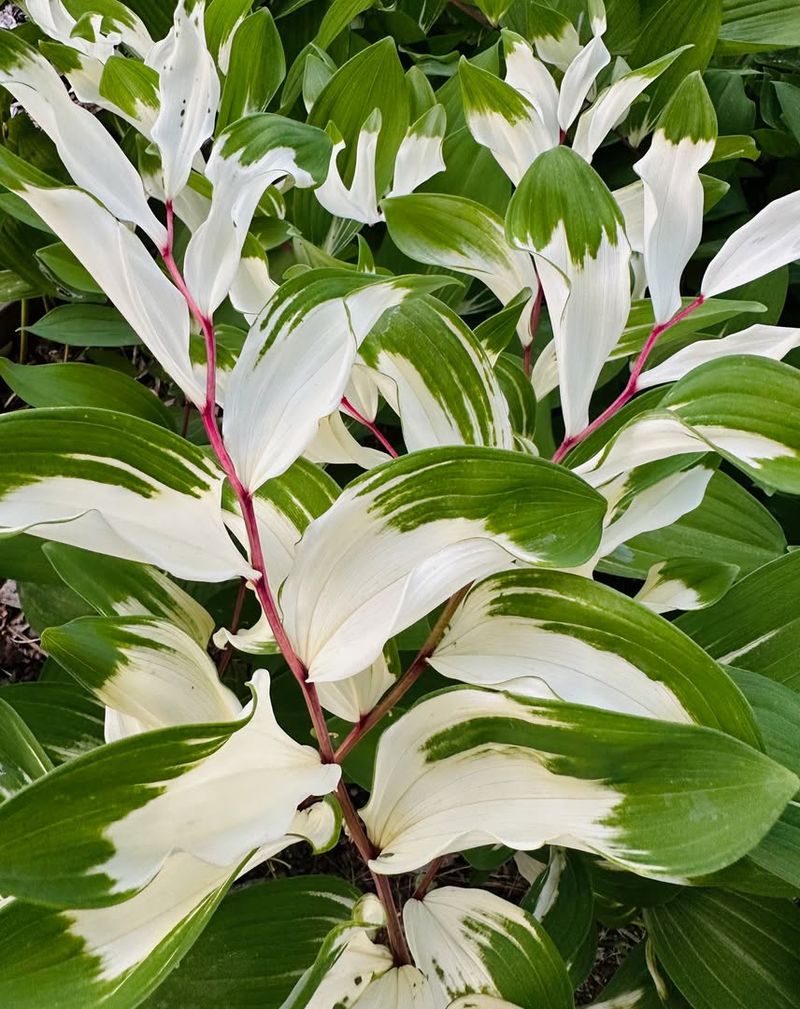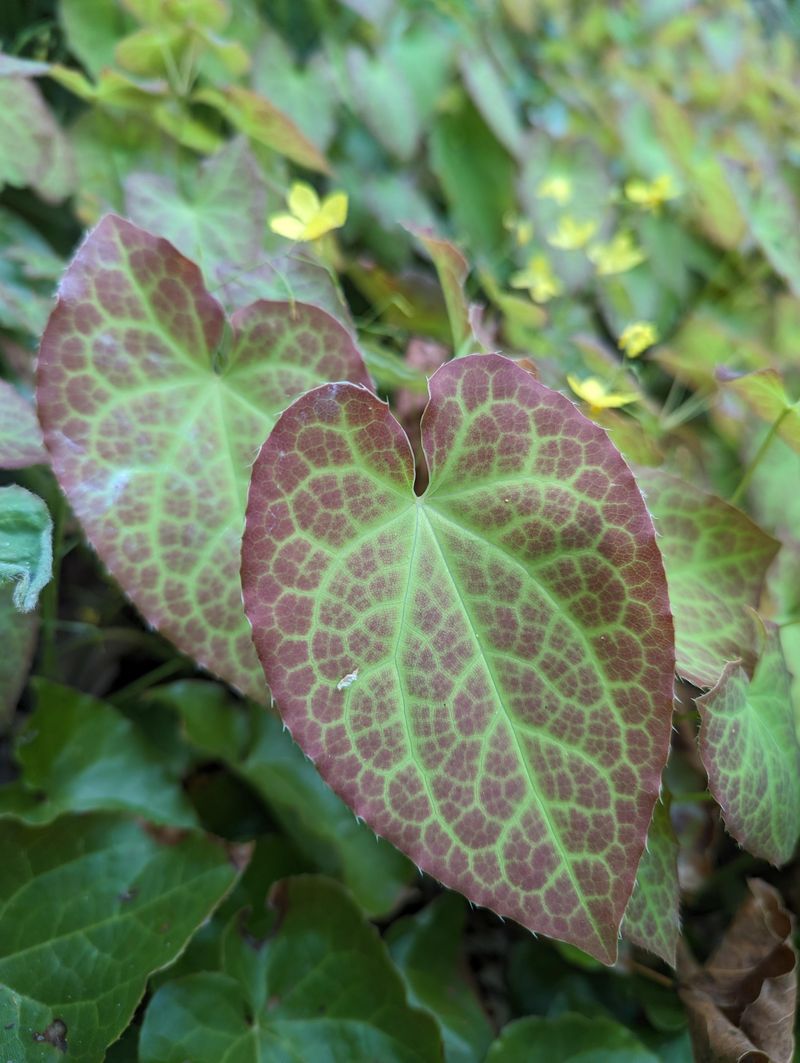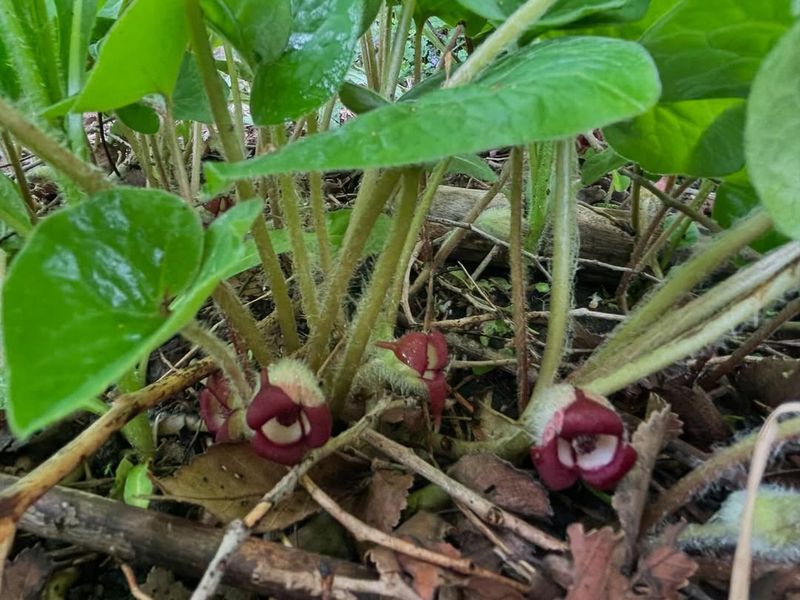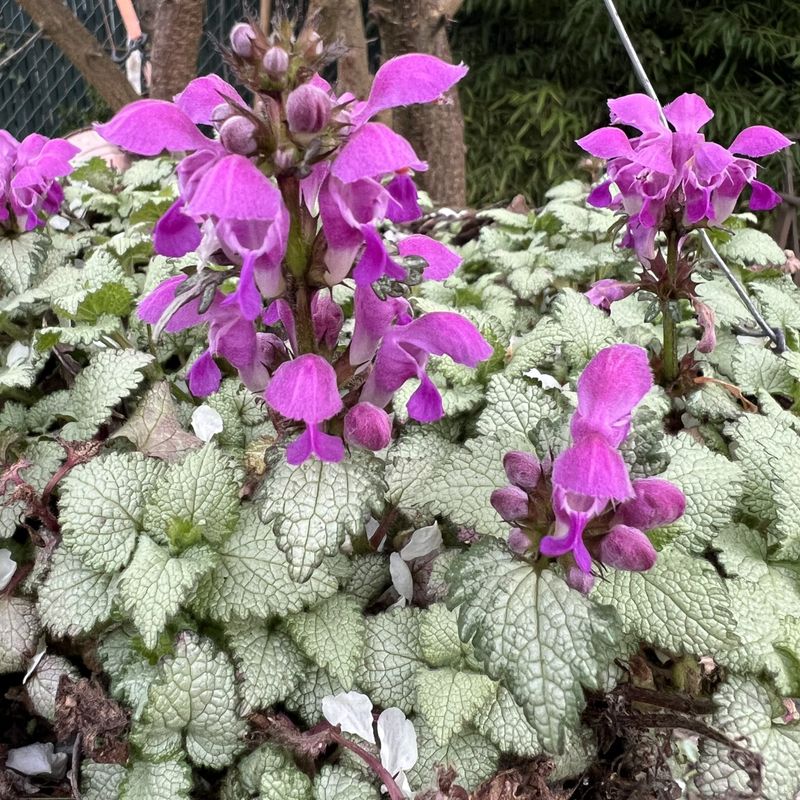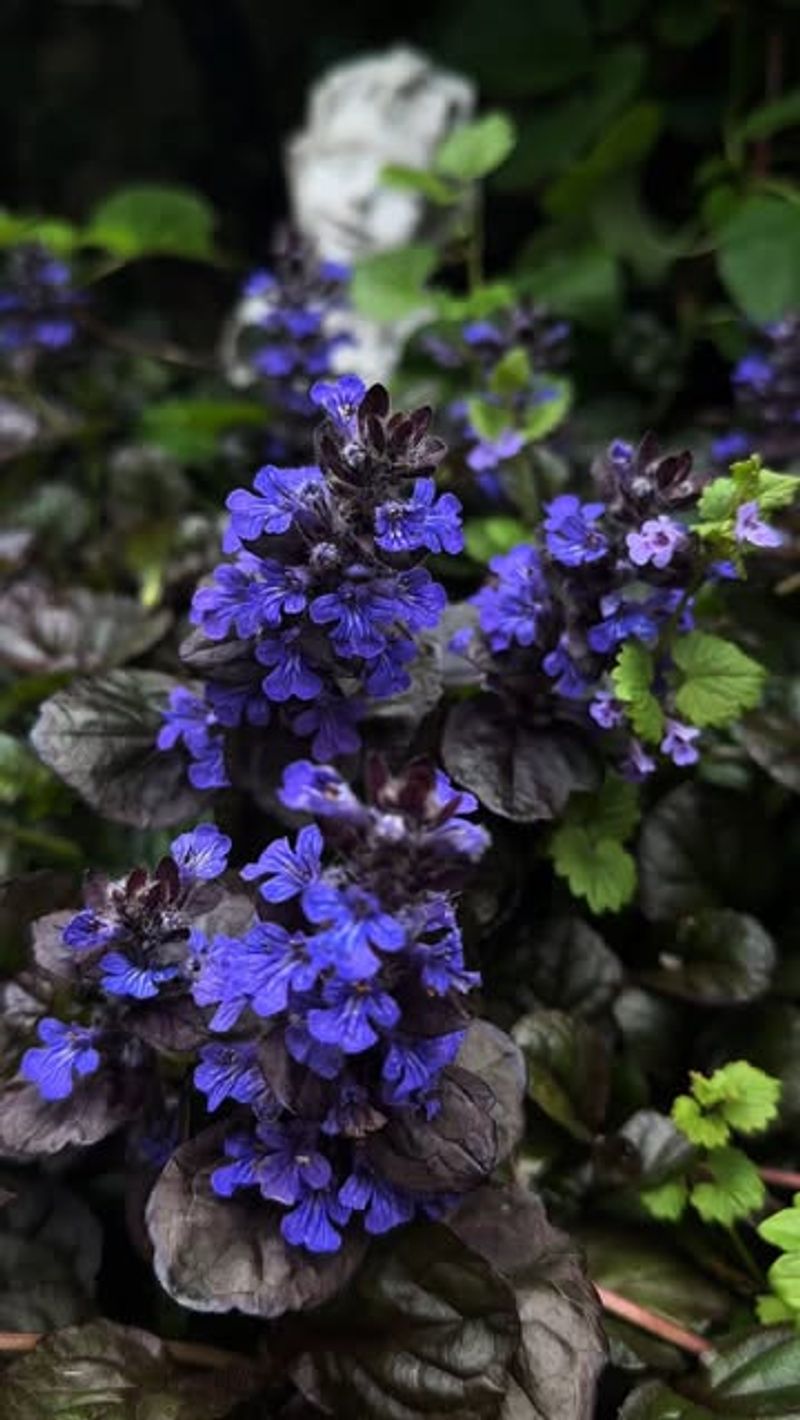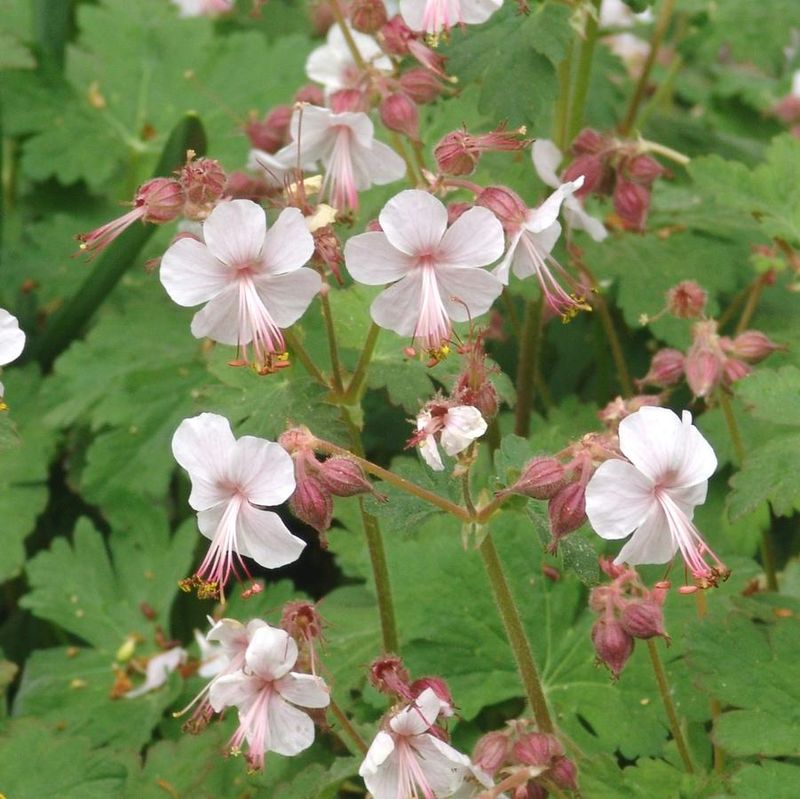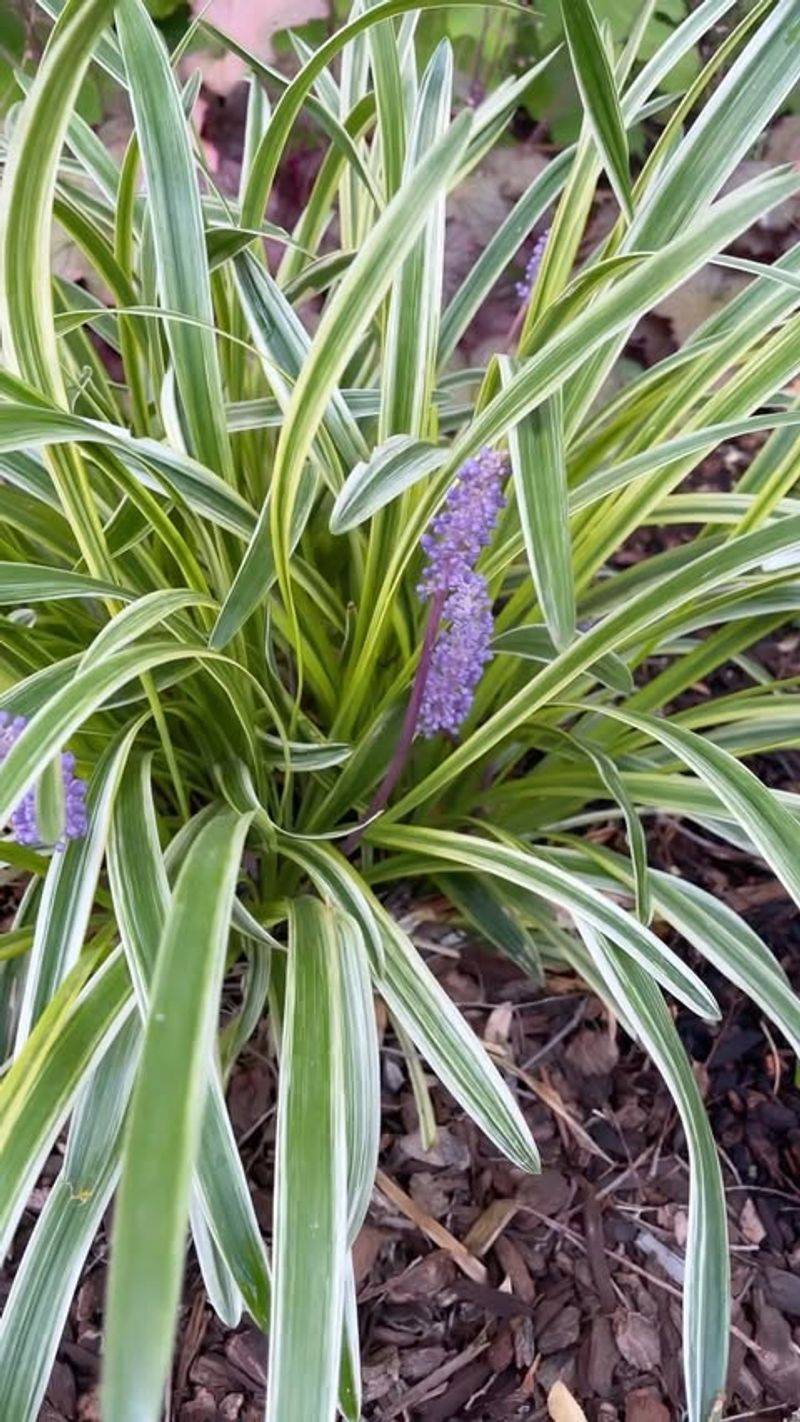Struggling with those dark, gloomy spots in your garden where nothing seems to grow? I’ve definitely battled with stubborn shady corners that felt more like dead zones than garden beds.
The good news? You’re not stuck with bare soil and disappointment. There are plenty of gorgeous perennials that actually thrive in low light and will return reliably each year.
Once I discovered the right shade-loving plants, those dull areas became some of the most lush and peaceful parts of my yard. It’s all about working with the light you have.
1. Hostas: The Shade Garden Champions
Known for their striking foliage, hostas come in countless varieties with leaves ranging from tiny to enormous. Their colors span from deep blue-green to bright chartreuse, some featuring cream or white edges.
I’ve planted hostas in the darkest corner behind my garage where they’ve thrived for years with minimal attention. They’re practically indestructible in shade!
Most varieties grow 1-3 feet tall and wide, forming neat mounds that suppress weeds. Their summer flower stalks attract hummingbirds, adding movement to still, shady areas.
2. Astilbe: Feathery Plumes Of Color
Astilbes bring welcome color to shade gardens with their feathery flower plumes rising above ferny foliage. These reliable performers bloom in shades of pink, red, purple, and white during summer months when many shade plants offer only greenery.
The moist soil beneath my maple tree seemed hopeless until I discovered astilbes. They’ve transformed that spot into a highlight of my summer garden.
After flowering, their dried plumes create winter interest if left standing. Plant several varieties for a sequence of blooms from early to late summer.
3. Japanese Forest Grass (Hakonechloa)
Graceful cascades of slender leaves make Japanese forest grass a standout in shady spots. The gold-variegated ‘Aureola’ variety seems to glow in dim light, while solid green types blend beautifully with woodland settings.
Slow-growing at first, this grass eventually forms elegant 12-18 inch mounds that move with the slightest breeze. My specimens along a north-facing wall catch every bit of filtered light, creating the illusion of flowing water.
Unlike many ornamental grasses, Hakonechloa actually prefers shade and consistently moist soil, making it perfect for spots where sun-loving grasses would struggle.
4. Bleeding Heart (Dicentra)
Heart-shaped flowers dangling from arching stems make bleeding hearts instantly recognizable. Traditional varieties bear pink or white heart-shaped blooms in spring, while newer types offer different colors and longer blooming periods.
After flowers fade, the blue-green ferny foliage continues providing texture until mid-summer. In my garden, I’ve paired them with late-emerging hostas that fill in as bleeding hearts go dormant.
Old-fashioned bleeding hearts (Dicentra spectabilis) can reach 3 feet tall, while fringed varieties (Dicentra eximia) stay more compact and bloom longer into summer.
5. Coral Bells (Heuchera)
Modern heucheras offer a rainbow of foliage colors from silver and purple to caramel and lime green. These compact perennials form tidy mounds of colorful leaves that brighten shade gardens year-round in mild climates.
Their tiny bell-shaped flowers on slender stems attract hummingbirds, but it’s really all about the leaves. I’ve collected over a dozen varieties, creating a tapestry of colors beneath my oak tree.
Most coral bells prefer partial shade rather than deep shade, especially the darker purple varieties which need some sun to maintain their rich coloration.
6. Ferns: Ancient Woodland Classics
Few plants say ‘woodland garden’ like ferns with their unfurling fronds and prehistoric appearance. From the massive Ostrich fern to the delicate Maidenhair, there’s a fern for every shady spot.
Last year I planted Japanese Painted ferns with their silver-washed fronds along my north-facing foundation. They’ve filled in beautifully without any special care beyond occasional watering during dry spells.
Most ferns prefer consistent moisture but established plants can handle short dry periods. Their ability to thrive in deep shade where few plants grow makes them invaluable problem-solvers.
7. Brunnera (Siberian Bugloss)
Silver-splashed heart-shaped leaves make Brunnera ‘Jack Frost’ and similar varieties stand out in dark corners. These hardy perennials light up shade gardens with foliage that appears to glow in low light.
Clusters of tiny blue forget-me-not flowers appear in spring, floating above the distinctive leaves. My Brunnera patch creates a stunning silver river through a difficult dry shade area under mature trees.
Once established, these plants are remarkably drought-tolerant for shade perennials. They form neat clumps that gradually expand but aren’t invasive, making them well-behaved garden citizens.
8. Tiarella (Foamflower)
Delicate spires of frothy white or pink flowers rise above attractively lobed, often maple-shaped leaves. Many varieties feature dramatic leaf markings with burgundy centers or veining that persists year-round.
Native to North American woodlands, foamflowers spread slowly to form naturalistic drifts. The patch beneath my redbud tree started as three small plants and now forms a carefree groundcover that suppresses weeds.
Tiarellas combine beautifully with ferns and hostas, adding seasonal flowers to these foliage-focused shade companions. They bloom heavily in spring with some varieties reblooming lightly through summer.
9. Hellebores (Lenten Rose)
Winter-blooming hellebores offer flowers when gardens need them most. Their nodding, cup-shaped blooms in shades of white, pink, purple, and green often appear while snow still covers the ground.
Leathery, evergreen foliage provides structure year-round, making hellebores true workhorses. In the shadiest corner of my yard, they’ve proven completely unfazed by dry conditions under mature trees.
Modern varieties hold their flowers facing outward rather than downward, making their intricate patterns and colors more visible. Some newer types feature double flowers that resemble tiny roses.
10. Pulmonaria (Lungwort)
Spotted or silver-washed leaves make Pulmonaria attractive even when not in bloom. These early-spring performers produce clusters of flowers that change from pink to blue as they mature, creating a multicolored display.
Lungworts were among the first plants I tried in a problematic dry shade area. Despite neglect, they’ve expanded into healthy clumps that wake up the garden when little else is happening.
Their fuzzy leaves discourage deer browsing, a huge advantage in woodland gardens. After flowering, the distinctive foliage continues providing interest through the growing season.
11. Japanese Spurge (Pachysandra)
Forming dense carpets of glossy evergreen leaves, pachysandra solves many shade garden challenges. This reliable groundcover spreads gradually to fill difficult areas where grass won’t grow.
Small white flower spikes appear in spring, but foliage is the main attraction. My north-facing foundation planting has been covered with pachysandra for fifteen years with virtually no maintenance required.
Once established, it effectively suppresses weeds and prevents soil erosion on slopes. For best results, plant small sections about a foot apart and let them fill in naturally over several seasons.
12. Solomon’s Seal (Polygonatum)
Arching stems lined with dangling white bells give Solomon’s Seal an elegant woodland presence. The flowers are followed by bluish-black berries, while the foliage often turns golden in fall.
Variegated varieties add extra brightness to dark corners with their white-edged leaves. A clump I planted five years ago has slowly expanded to create a graceful vignette alongside ferns and wild ginger.
Growing 1-3 feet tall depending on variety, these shade-lovers spread via underground rhizomes to form colonies over time. They’re remarkably drought-tolerant once established, even in challenging dry shade.
13. Epimedium (Barrenwort)
Dainty flowers hovering like tiny butterflies appear in spring above heart-shaped leaves. Often called ‘fairy wings,’ these blooms come in shades of yellow, pink, purple, or white depending on variety.
Epimediums are surprisingly tough despite their delicate appearance. The clump under my maple tree has survived both drought and root competition with minimal care, proving their worth as problem-solvers.
Semi-evergreen or deciduous depending on climate, they form slow-spreading clumps that eventually make excellent groundcovers. New spring leaves often emerge with bronze or red tints before maturing to green.
14. Wild Ginger (Asarum)
Heart-shaped, glossy leaves form a low-growing groundcover perfect for woodland gardens. European wild ginger (Asarum europaeum) offers evergreen leaves, while native American wild ginger (Asarum canadense) is deciduous.
The hidden flowers appear at ground level beneath the foliage – you’ll need to peek underneath to find them! My patch started as just three plants but has spread to cover several square feet in just a few years.
Despite their common name, these aren’t related to culinary ginger but were historically used medicinally. They thrive in the same conditions as trilliums and other native woodland plants.
15. Lamium (Dead Nettle)
Silver-streaked leaves brighten dark corners year-round in mild climates. This low-growing perennial groundcover offers both colorful foliage and small snapdragon-like flowers in purple, pink or white.
Fast-spreading but not aggressive, lamium quickly fills gaps between larger shade plants. The ‘Beacon Silver’ variety in my side yard has transformed a once-bare patch of dry shade into a silver carpet dotted with pink flowers.
Unlike many shade perennials, lamium tolerates dry conditions once established. Trim back occasionally to encourage fresh growth and maintain its neat appearance.
16. Ajuga (Bugleweed)
Forming dense mats of colorful foliage, ajuga serves as an excellent shade-tolerant lawn alternative. Varieties range from glossy green to bronze, purple, or variegated, creating year-round interest.
Short spikes of blue, purple, or white flowers appear in spring, attracting early pollinators. My ‘Black Scallop’ ajuga with its nearly black leaves creates dramatic contrast against neighboring silver-leaved plants.
This vigorous spreader quickly fills bare areas and suppresses weeds. It’s perfect for covering ground beneath trees and shrubs where grass struggles, though it can be too aggressive for planting among delicate perennials.
17. Bigroot Geranium (Geranium macrorrhizum)
Semi-evergreen foliage forms weed-suppressing mounds that release a pleasant scent when brushed against. Unlike many geraniums that prefer sun, this tough species thrives in partial to full shade.
Clusters of pink or magenta flowers appear in late spring, standing above the aromatic leaves. After discovering these in a friend’s garden, I added them to a dry, root-filled area under my oak tree where they’ve flourished without babying.
Fall brings bonus color as the leaves turn reddish-orange before winter. Their drought tolerance once established makes them ideal for challenging spots where other perennials struggle.
18. Liriope (Lily Turf)
Grassy foliage in neat clumps or spreading patches makes liriope a versatile shade garden staple. The variegated types add brightness to dark corners with their gold or white striped leaves.
Late summer brings spikes of purple or white flowers resembling small grape hyacinths, followed by black berries that persist into winter. I’ve lined my shaded garden path with liriope, creating a tidy, no-fuss border that looks good year-round.
Clumping varieties stay in tidy mounds, while spreading types make excellent groundcovers. Both handle poor soil, drought, and root competition from trees better than most perennials.

